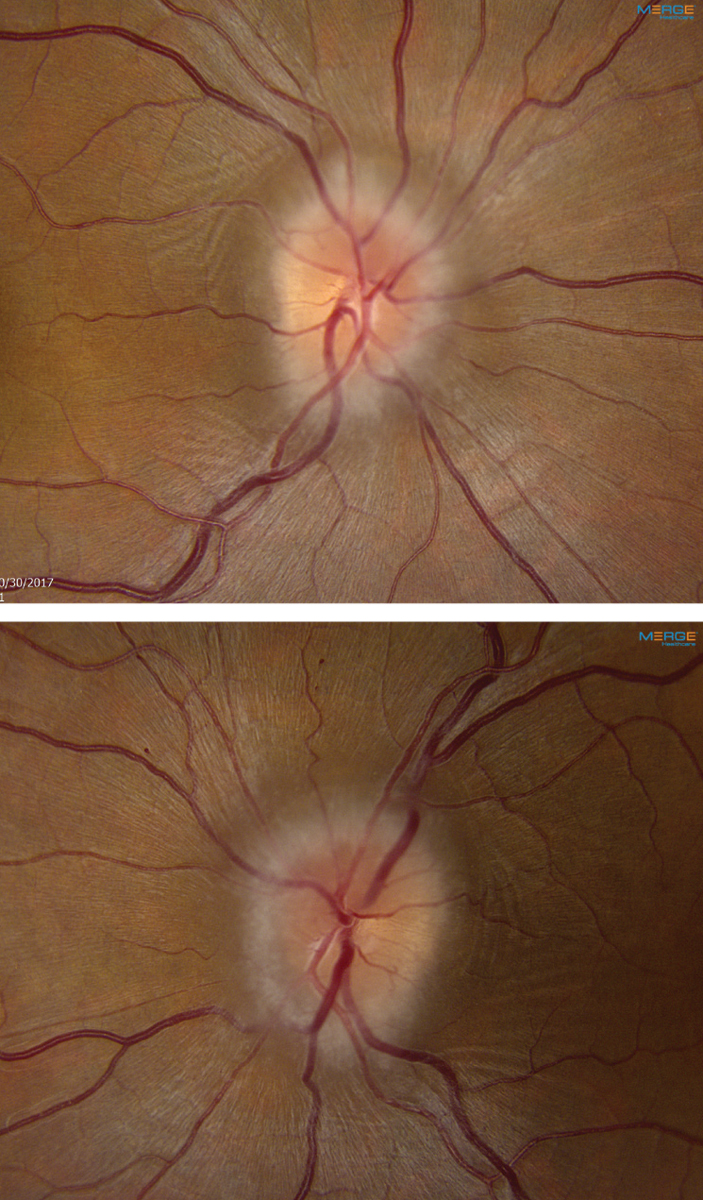 |
| Papilledema patients who are asymptomatic may still have IIH progression. Photo: Mark T. Dunbar, OD. Click image to enlarge. |
Papilledema patients with idiopathic intracranial hypertension (IIH) often experience symptoms related to elevated intracranial pressure (ICP) such as headaches; however, some patients may have optic disc edema without any symptoms. In a recent study, researchers aimed to characterize the initial clinical findings and visual outcomes over a three-year follow-up period in a group of asymptomatic patients.
Five female patients met the criteria for the diagnosis of IIH, had bilateral optic disc edema and did not have any symptoms of elevated ICP. The mean age was 25.2, and the mean body mass index (BMI) was 36.2kg/m2.
The results showed that the disease course for patients who present with asymptomatic IIH can be variable, yet still visually significant. Despite experiencing no symptoms, patients can progress to symptomatic disease or experience persistent optic disc swelling or pallor even with the use of medication to lower ICP (three of the patients were prescribed acetazolamide). Patients also may experience relapses associated with changes in weight or medication compliance.
Despite every patient having a BMI over 30, no correlation was found between BMI and clinical variability or disease progression.
“We hypothesize that asymptomatic IIH falls into a spectrum of the disease before progressing into the classic symptoms,” the authors concluded. “For these reasons, we recommend continued assessment for patients found to have IIH, even in the absence of symptoms, to avoid potential visual loss related to papilledema.”
Rohani N, Foroozan R. Clinical course of asymptomatic patients with papilledema from idiopathic intracranial hypertension. Can J Ophthalmol. March 15, 2022. [Epub ahead of print]. |

